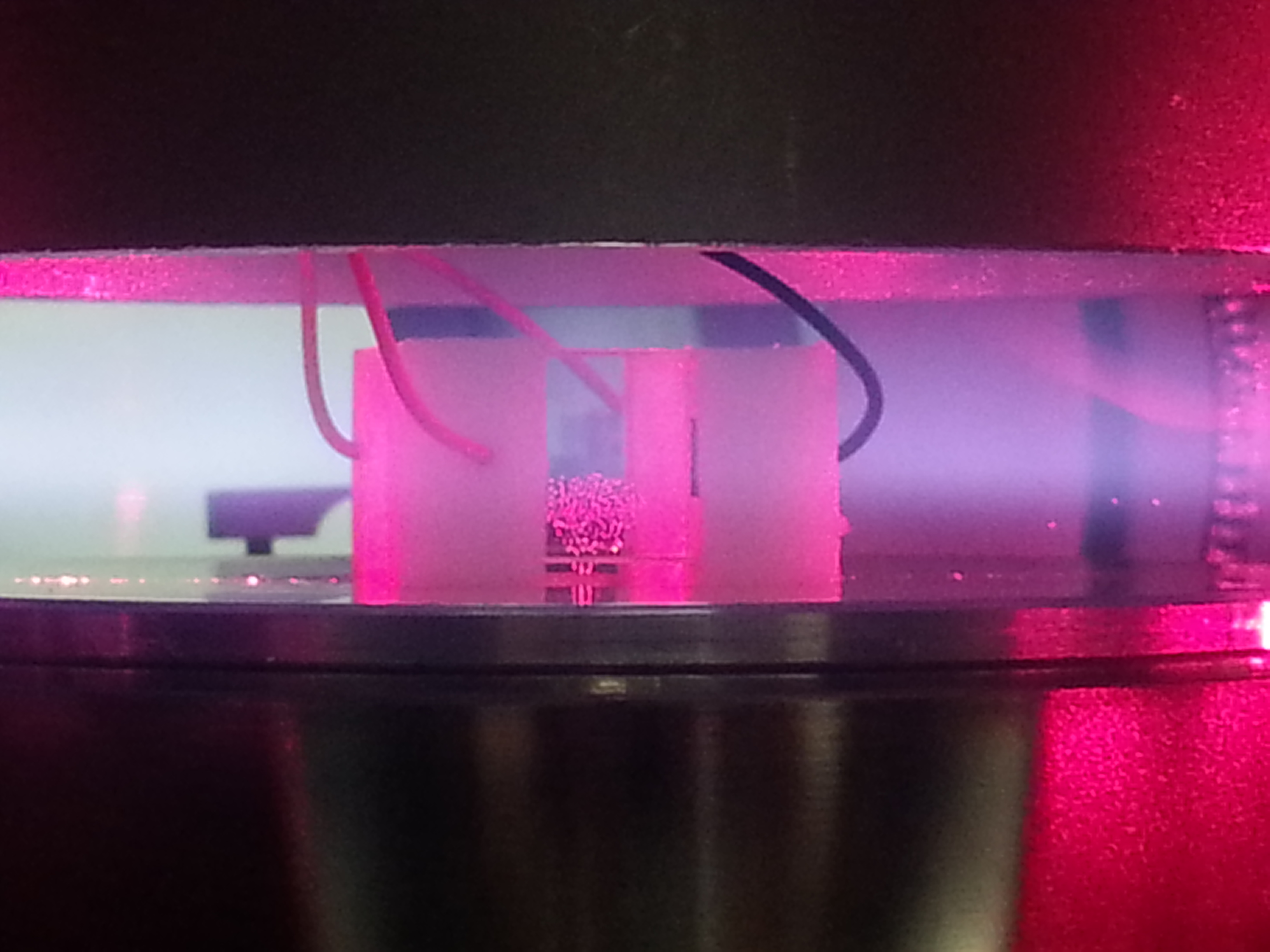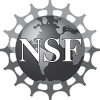Visualizing Matter
Scientists at CASPER investigate the fundamental physics principles guiding the plasma-matter interactions in complex (dusty) plasma systems. These systems contain millimeter (10−3 m) to nanometer (10−9 m) sized particles suspended in a plasma environment, forming a new state of multi-component matter, called dusty plasma. Recent advances allow the dust grains to be observed optically, providing the ability to examine dynamical processes within the plasma at the scales of the individual dust particles. The data obtained in this manner can then be used to inform numerical models allowing for a proper examination of the system.
Dust cloud trapped inside a glass box placed on the lower electrode of a GEC RF plasma cell. Image credit: CASPER
Scientists at CASPER employ advanced laboratory techniques to study dusty plasma structures, allowing investigation of the fundamental processes of self-organization, dynamics, and stability in complex matter. The data obtained from experiments is then used in numerical modeling to establish the underlying physics involved.
Dust particles immersed within a plasma environment acquire an electric charge. Depending on the plasma environment and the confinement provided by the experiment, these dust particles can self-assemble into a variety of structures including dust crystals, Coulomb balls, strings, and helical string bundles. Within the HIDPL (directed by Dr. Truell Hyde) CASPER faculty and students conduct a number of experiments using a variety of experimental platforms, including two GEC RF reference cells, a large custom RF cell, a DC driven discharge chamber (the PK-4-BU analog), an inductively coupled plasma generator (IPG6), and a light gas gun. This diversity of available experimental setups, combined with high-precision dust perturbation systems (including a S-100 nano-manipulator and Verdi and femtosecond Ti:Sapphire lasers) allows scientists in our lab to tailor experiments across various areas of research.
Both graduate and undergraduate students working within the Dusty Plasma Lab can contribute to ongoing projects through experimental work, laboratory diagnostics, experimental, theoretical and numerical support.


